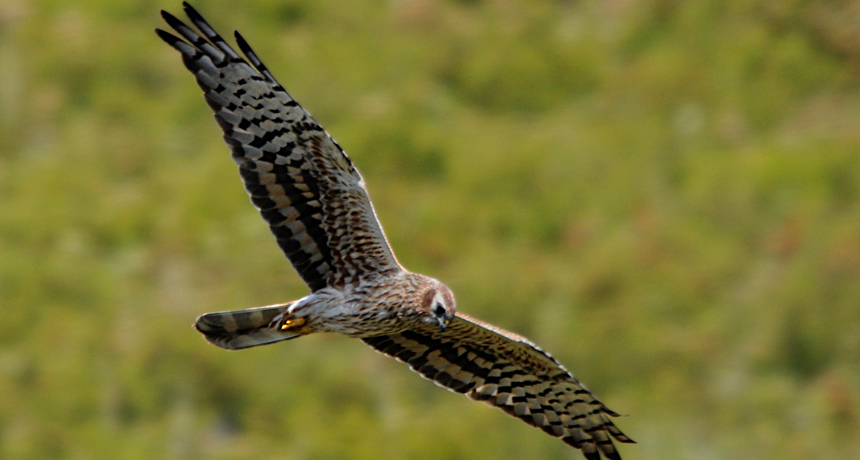Migration is a deadly time for raptors

This Montagu’s harrier was spotted in Portugal, but it would have spent the winter in sub-Saharan Africa. That migratory journey comes with threats to such raptors’ lives.
Isidro Vila Verde/Flickr
- More than 2 years ago
For a bird or any other animal that migrates a long distance, it’s sure to face a host of dangers. There are predators to avoid. It may encounter new diseases. There could be bad weather or a shortage of food, or it might face exhaustion. Mass mortality on a migratory route is not unheard of.
The story is no different for raptors. And a recent study published in the Journal of Animal Ecology finds that for three species of raptors that summer in Europe and winter in sub-Saharan Africa, the mortality rate is six times higher during migration than when the birds are stationary.
A team of researchers led by Raymond Klaassen of Lund University in Sweden fitted 69 adult raptors — 18 ospreys, 17 western marsh harriers and 34 Montagu’s harriers — with satellite transmitters and tracked them as the birds traveled between their breeding grounds in Europe (mostly Sweden and the Netherlands) and their wintering grounds in tropical West Africa. Fifty-one of the birds died while the scientists tracked them, and though bird deaths occurred throughout the year, they peaked from March to May and from July to October.
About the same number of birds died during migration as when they were settled in one place. However, because the time spent traveling was so much shorter than the stationary periods, migration ended up being six times as deadly.
One might expect that flying across the Sahara might be the deadliest endeavor for the birds, but that was true only for the spring, when the birds were flying north. In the autumn, they were more likely to die in Europe, before they ever reached Mediterranean, let alone the vast desert. The dangerous nature of the Sahara, however, might explain why juveniles of some birds that winter in Africa, such as ospreys and honey buzzards, spend a year or more in the warm comfort of the African tropics before attempting the long journey north, the researchers say.
What killed off the birds in the study is harder to determine than the simple mortality rates. “It is extremely difficult to establish the exact cause of death from satellite tracking data only,” the researchers note. It’s possible that some of the birds were taken out by anthropogenic factors such as power lines or hunting, but natural factors were probably responsible in many of the deaths, particularly those over the Sahara, the team says.
Only one study before this examined mortality for a bird species during migration, breeding and wintering. That paperfound that migration was an even deadlier time for the North American black-throated blue warbler; birds of this species were 15 times as likely to die during migration as during a stationary period.
This kind of data provides more than just interesting factoids, notes Graeme Hays of Deakin University in Warrnambool, Australia, in an article accompanying the new study. “This study paves the way for more in depth analysis of mortality hotspots which may help targeted conservation programmes,” he writes.
Discovering what happens when satellite-tracking tags go awry can provide important information about how animals die. When Hays tracked down tags attached to sea turtles, for example, he was able to find instances of turtles being caught by humans and consumed. Other studies have found sea turtles killed by fishing gear and propeller strikes. “These studies,” Hays writes, “highlight how for migratory species it is important to consider the threats to individuals once they travel outside protected areas.” If we know more about how animals die, it should be easier to prevent it from happening.






